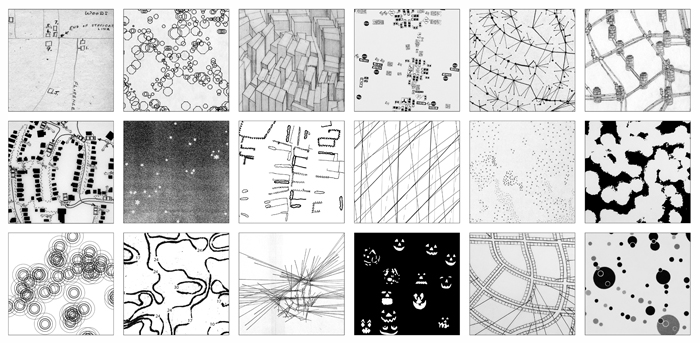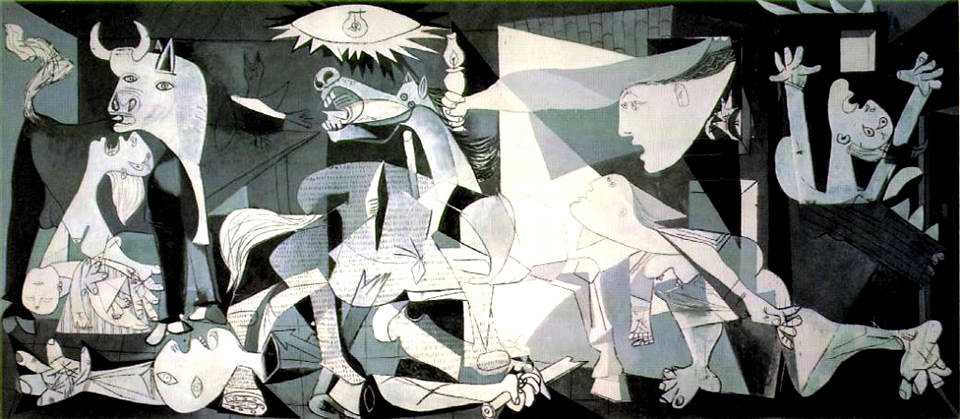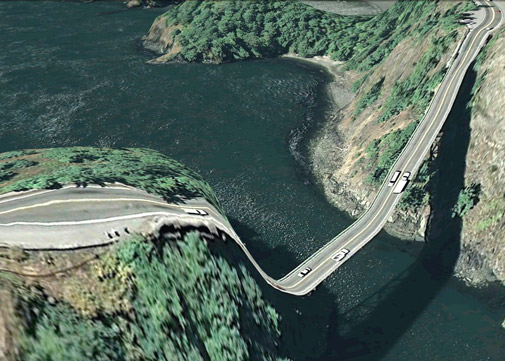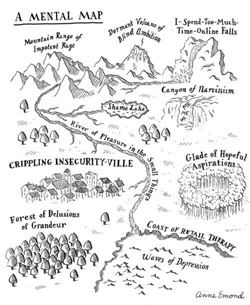Conversational Mapping
We are all looking for connective treasure.
In a world of informational downloading, circumstantial updating, organizational allocation and parallel monologueing, the occurrence of a meaningful conversation is gold. It makes the rest of it tolerable.
It’s paramount to thriving.
Beyond the barrage of information are the subtle and intense emotional nuances that impact our wellbeing. They can help us rise above the drama or be thrown into the tumultuous fray.
Some conversations leave you feeling icky inside: some deeply inspired. Some leave you feeling duped and confused: others seen, heard and valued right down to your toes. When you feel good there’s no real need to analyze it.
BUT, when you don’t, the only way I’ve found to feel better (besides dark chocolate covered almonds) is to map it out and determine who is responsible and why. I used to think this was only necessary for people who are on the more sensitive side.
But, then I made a rather obvious observation.
Even the most bold and impervious cannot flourish or succeed in life without understanding where, how and most importantly WHY a conversation turned left when it was meant to go right.
Parents cannot guide well without this skill. Managers, artists, sisters– it doesn’t matter whether you are a CEO, freedom fighter, tiger mom or florist, you have to interact with all kinds of people all the time. So, you need to know what’s going on.
Did you behave regrettably?
Maybe unintentionally say something cutting, petty, unforgiving? Why? Are you pissed off? Why? The words, of course, matter and may require any form of mitigation.
BUT, the only way to get back on track with whomever you are feeling “off” with is to assess who is responsible for what and why. To map it out.
Maybe it had nothing to do with you at all.
Maybe someone else behaved poorly? If you care about her (or him), why do you think she acted out? What’s going on in her life? How can you help? Lord knows we all need it at different times.
My husband has the kindest, most unobtrusive way of asking me questions that facilitate me being more aware, responsible and generous with myself and others. This is a huge relief. Because, who really wants to be an asshole?
For the sake of simplicity, this mapping strategy has three components.
The Content
This is like conversational geography.
What are we going to talk about? Are we headed into a new adventure? Are we going to explore it with curiosity? Allow the mystery to guide us? Or are we gong to manhandle it into the direction we think it should go?
Are we going to take the same walk we took yesterday and the day before? If so, will there be anything new? Are we going in as detectives or drones?
Covering old ground the same way? Or digging into it differently?
The Intensity
This is the equivalent of conversational topography.
What is the energy level of the exchange? How high? How low? What is our approach? Are we going to walk or run? Saunter or gallop? Skip, crawl or swim?
Are you being blasted with a fire hose of thoughts? Or attempting to drag around a sack of potatoes? The odds of both conversationalists having the same oomph are unlikely. Having been on both ends, compromise is usually mutually unrewarding.
BUT, if there’s no give, it’s like a waif trying to seesaw with a sumo-wrestler.
So, the question becomes can the slower of the two rally since people who are running get very impatient if they are slowed to a walk. Or can the faster of the two chill since people who are crawling don’t have it within them to gallop.
Sometimes the best we can do is find an exit strategy.
The Intention
This is similar to conversational territory.
The expression, the map is not the territory, applies here, because this particular element is not diagrammable on a two-dimensional plane. It cannot be witnessed and documented. It can only be sensed only by intuition and instinct.
It is a powerfully invisible landscape. Like love, gravity or faith.
Content and intensity are important. But intention is by far the most vital piece of information you can have. Before speaking, question your intentions. Are they cloudy, pure, spiteful or loving?
How I answer helps me determine if I should engage at all. And if my intentions are genuine, it helps me remain clear and clean regardless of where the conversation may go.
If you’re on the receiving end, it’s crucial to intuit as quickly as possible if the intentions are sincere or sketchy.
There are clues.
Sometimes the intensity is over the top, or the content has been somehow shaped into a blunt instrument. Or, there is an edge in tonality that keeps cutting you off.
It’s critical to attain this information because even though we may be saying good, nice, grateful things does not in any way mean the energy of the conversation is good, nice or grateful. And we can say mean things and not mean them at all.
Sometimes we act pointed and impatient because someone else has deeply hurt our feelings and we don’t know how to deal with it?
I have been on the acting and receiving end of all these and plenty more.
Waiting until we have clarity of intention can be challenging, especially for the patience-impaired among us, but it has saved me more times than I count!
It comes down to locating our internal compass and embarking on conversations with clear direction. It doesn’t really matter where we’re going, only that we arrive with a pure heart.









